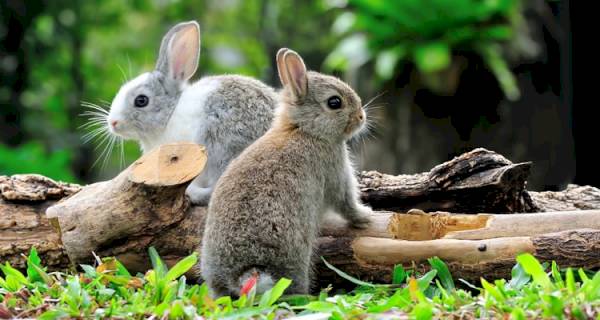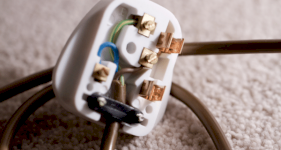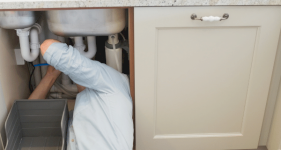Attracting Animals and Wildlife to your Garden

There is something magical about a garden thriving with wildlife, with all the sounds and sights bringing the wonder of nature right to your back door.
Whether your garden is large or small, in the open countryside or at the heart of a bustling city, creating your own wildlife haven is easier than you think. Adapting your outdoor space to boost its biodiversity doesn't mean you need to compromise on how your garden looks. The return on your time and effort can be truly spectacular and give you a garden that is a pleasure to look after as well as to sit in, relax and enjoy.
A vibrant, natural garden really is a win/win – we can create spaces that support creatures that may be declining in the wild while our gardens flourish with colour and life. So, if you would like a garden that is more on the wild side, help is at hand. We explore the steps you can take to attract more animals and wildlife into your garden and create a space that they can also call home.
Species To Attract To Your Garden
For a healthy ecosystem in your own back yard, you should aim to encourage a diverse range of wildlife to either regularly visit your garden or consider it their home. Getting the right balance of animals and wildlife will take your garden to a whole new level and you will soon see your flowers, plants, vegetable plots and fruit trees really blossom. From tiny bugs and pollinators to foragers, pest controllers and small predators, you'll be creating a finely tuned ecological habitat that you will be proud to call your own.
Here are just some of the species you could soon be welcoming into your garden.
Birds And Bats
Create the right feeding and breeding environment and you will get birds and even bats flocking to make the most of your special wild place. Birds and bats need shelter, food and a safe place to nest and breed. With 574 species of native birds and 18 species of bats in the UK, you may well see the below in your wildlife-friendly garden:
Common Species:
- Sparrows – noisy and gregarious, the house sparrow has adapted to domestic life and can be found in both the city and countryside all year round.
- Robins – with its distinctive red breast, the European Robin is a familiar sight in UK gardens and are synonymous with Christmas. They look pretty but can be aggressively territorial.
- Blue Tits – all-year-round visitors, these colourful small birds like company and will typically be seen at the bird feeder in groups of four or five. They love insects and caterpillars.
- Great Tits – the largest UK tit, these green and yellow birds rule the roost when it comes to foraging food. As woodland birds, they have adapted well to the UK garden.
Less Common/Endangered:
- Swifts – a summer visitor, the swift is an aerial acrobat and will even sleep on the wing. The UK swift population is in decline, partly due to lack of insect food and suitable nest sites.
- Owls – there are five native species of owl in the UK: Tawny, Little, Barn, Long-eared and Short-eared. Nocturnal animals, they can be hard to spot, but their distinct hoot will give their game away.
- Bats – loss of habitat means our native bats are becoming increasingly rare and all 18 species are now protected. Bats roost in a host of places, from trees to buildings and an insect-rich garden can help to attract them to your green space.
Insects
Insects are vital to any thriving ecosystem and your garden is no exception. Essential as pollinators and as a food source for other animals, many insects are also hardworking predators and are the ideal pest control. With the right plants and trees as well as nesting and breeding spots, your garden can become a haven for these tiny, but oh so important invertebrates.
Common Species:
- Ladybirds – with 46 different types in the UK, ladybirds are actually beetles and are a gardener's best friend. They eat aphids, mites and white flies, which are harmful to your plants and flowers.
- Butterflies – these winged beauties are an essential part of our ecosystem. Not only are they stunning to look at, but they also work hard as pollinators, pest controllers and as a food source for other creatures.
- Bees – from the bumble to the honeybee, there are over 250 species of UK bees and all are vital to our green spaces. Nesting in colonies, bees ensure the health of your garden by transferring pollen between flowering plants.
Less Common/Endangered:
- Stag Beetles – almost extinct in many parts of the UK, the magnificent stag beetle is now mainly found in the south of England. They live in woodland, hedgerows and orchards and are the largest insect in the UK. They eat decayed wood, fruits and smaller insects.
- Garden tiger moth – the moth is essential to your garden and this daytime flier is no exception. Known for its ‘woolly bear' caterpillar, the tiger moth is on the decline as our warmer, damp winters impact on the survival of its larvae.
Mammals
Shy and secretive, small mammals can enhance your experience of your garden and as predators are part of the natural food chain. With the right shelter and food sources, your garden can offer a welcome haven to a host of furry critters, especially during the harder, winter months.
Common Species:
- Grey squirrels – originally from North America, grey squirrels dominate both urban and rural gardens and are year-round visitors for food and shelter as they don't hibernate.
- Hedgehogs – Well-established in urban environments, hedgehogs are a delight to see in your back garden. They hibernate between November-March and are great pest controllers.
- Foxes – these inquisitive creatures are a familiar sight in many gardens, both in the heart of the city and more rural locations. The UK's urban population of foxes is thought to top over 150,000.
Less Common/Endangered:
- Red squirrels – the UK's native squirrel, the red's population has significantly dropped, in part due to the dominance of the grey squirrel. Red squirrels are now largely found in the north west, north Wales and Scotland.
- Hare – the brown hare is a protected species in the UK. This large-eared mammal prefers grass and woodland habitats and needs space to roam and are most visible in early spring.
- Dormouse – increasingly rare in the UK, these tiny rodents are mainly found in the south, with some populations in the Midlands, Wales and the Lake District. They hibernate underground but will also use an empty bird box.
Water-based Wildlife
A wildlife pond in your garden will attract an array of wildlife throughout the year. Left to evolve naturally and your pond will become a fascinating ecosystem in its own right, while helping your garden to grow and thrive. Here are just a few of the pond inhabitants you could expect:
- Frogs and toads – there are two species of frog and two species of toad in the UK, with the common variety the ones you are most likely to see as both Natterjack toads and the British Pool frog are endangered. Frogs and toads need water to breed and shelter while their tadpoles will feed on algae in the water.
- Newts – these small, lizard-like amphibians are also a common sight around the UK and will lay their eggs on pond plants, so ensure your wildlife pond has a good plant surface cover. Newts are semi-aquatic and spend part of the year on land.
- Water invertebrates – sit by your pond on a late summer afternoon and the surface will literally be buzzing with delicate and iridescent insects, keeping the water's ecosystem thriving. The likely water invertebrates you will encounter include pond skaters, water snails, dragon and damsel flies and water boatmen.
- Waterfowl – many smaller birds will visit your garden for both food and fresh water, and if you have a pond will use it to drink and bathe. If you have a large pond, it could well also become a visiting place for larger birds. Wetland and waterfowl species you could encounter in your wildlife garden will be predominately surface feeders and may include migrating ducks, geese and herons.
Ways To Attract Wildlife To Your Garden
Adapting your garden to provide opportunities for wildlife to feed, forage, shelter or breed doesn't need to be complicated or require major landscaping or restyling. Just a few simple changes or additions to your garden will open it up as a welcoming green space for a whole host of wild creatures to visit and stay.
Bird And Bat Nesting Boxes
Nesting boxes will help to encourage birds and bats to make your garden their breeding site but getting the right box as well as location is essential if you are to get them to stay. Both birds and bats help to manage insect populations and also play a key role in plant pollination and seed dispersion. Plus, they are fascinating to watch and observe throughout the year.
When choosing a nesting box, make sure you select a box that is appropriate to the species native to your area, for example, sparrows nest communally and would need a terrace-style box.
The RSPB has an extensive guide to UK native birds and where they can be found here at –
rspb.org.uk
When putting up a bird or bat box, it's essential that the location in your garden is sheltered from the elements and is high enough and suitably hidden to keep them – and their young – safe from ground predators. A well-established tree or a tall, dense bush are good options and always make sure you install your new nest box before Spring so that you don't interrupt the breeding season.
A good tip is to fix the box so that it leans slightly forward to prevent any water getting in and always make sure a bird will have a clear flight path into the box entrance. Also, just be mindful of placing the nesting boxes too near a pathway or your garden patio, to avoid any unfortunate accidents when it comes to their droppings.
Feeders
A well-placed feeder will be irresistible to both birds and small climbing mammals such as squirrels, and can be a nutritional boost, particularly during the winter months. But that doesn't mean that one feeder fits all as you need to be careful about what food you are putting out. A good idea for your birds is to get a squirrel-proof feeder so you can ensure everyone gets their share!
The best food for most British native garden birds are seed mixes, including sunflower and unsalted peanuts but you can also use mealworms, suet mixes and special bird food balls. For squirrels opt for nuts although they will also eat fruit and vegetables. Don't feed bread or processed foods to any of your garden's wildlife.
When fixing your feeders, make sure they are clear of the ground and sheltered from the elements and potential predators but that the bird has easy flight access to it. Also, if you put the feeder in a location where you can see it, so you have the chance to observe and enjoy your feathered or furred visitors. Add a birdbath and table and you'll have those birds flocking back to your wildlife garden, time and time again.
Available Food Dishes
As well as flight and climbing animals, you can also look to cater for ground critters that may be attracted to your garden by the prospect of a good meal. Nocturnal mammals such as hedgehogs, badgers and foxes can sometimes find food scarce, particularly if they are urban dwellers, so leaving the right food out on dishes can be a great way to tempt them in. While you can buy specially prepared feed, chances are you already have nutritious food for them in your kitchen cupboard.
Badgers will eat unsalted nuts and seeds, as well as fruit and root vegetables. Foxes, badgers and hedgehogs are also partial to dog or cat food but never leave out bread or milk, as these can cause serious digestive problems in wild animals.
Leave the food dishes out in the evening and wait or check the CCTV in the morning to discover if you've had any nocturnal visitors. If you are not sure if you live in a ‘badger area', check out this guide from the Woodland Trust woodlandtrust.org.uk.
You could also look to create a hedgehog house so these prickly foragers have somewhere to hibernate over the winter months. Foxes can also take a liking to your garden and create a den if you have a suitable place to dig, such as under a garden shed.
It is important when feeding wild mammals not put out too much food as you do not want them to become dependent on you as their main food source.
Plant Life
The right variety of plant life can make all the difference when it comes to attracting wildlife, both big and small, to your garden. Plants not only provide food but also shelter as well as a safe place for insects to lay eggs. Native plants are essential to local biodiversity as they work naturally with the wildlife that has evolved alongside them.
Flowers provide pollen and nectar for bees, butterflies and other insects and while highly cultivated plants and flowers will look beautiful in your garden, they are not the greatest when it comes to the task of fertilisation. Aim to include more pollen-friendly native species into your flowerbeds and borders, especially varieties that enable your garden to have a long flowering season.
Plant pollen-bearers for the various times of the year, starting with plants such as crocuses in the spring, through to late-bloomers Michaelmas daisy and ivy. Also look for plants that are the favourite nectar of butterflies, insects and bees, such as foxglove, buddleia, honeysuckle, dahlias and nasturtium.
Climbers and wallflowers such as privet, dog rose and holly can also entice wildlife into your garden, by providing shelter and roosting sites against a stable wall or fence and are also an excellent safe haven and egg-laying spot for insects. The Royal Horticultural Society has an excellent guide on the best plants for pollinators www.rhs.org.uk
Ponds
Creating a pond is one of the most effective ways to bring wildlife to your garden and add an amphibious edge to its diverse ecosystem. And it doesn't have to be particularly large or sophisticated; even a large shallow pot will be able to spring into pond life. A pond will bring a host of wild beauties into your garden, including frogs, newts, and dragonflies as well as provide a natural source of water for land-based wildlife and, as it matures, it will become a stunning feature.
To give your pond the best chance to thrive, choose a sunny spot in your garden away from overhanging trees and make sure it has shallow outer sections, so that the amphibians can climb in and out. Add some stones around the edges to make it easier and use rainfall water from your water butt to fill the pond. And, if you are wanting your pond to be purely for wildlife, resist the urge to add fish as they will only become predators to the rest of its inhabitants.
Create shelter and protection by using broad leaf surface plants such as water lilies and pondweed, then add wildlife-enticing plants such as yellow iris and marsh marigold. Then step away and let nature take its course and colonise your new wild water feature in the most stunning of ways.
Trees, Hedges and Shrubs
Trees are essential to supporting wildlife so if you have space, make sure you have at least a few trees to help attract birds, insects and climbing mammals to your garden. Native varieties are the best, especially varieties such as silver birch, yew and alder as well as some larger trees – elm, beech or ash are good choices as they provide opportunities for wildlife to nest. If you can, plant trees together to create a mini woodland habitat for cover and security. Fruit-bearing trees are also wildlife ‘magnets' thanks to the gorgeous blossom plus you get a tasty crop at the end of the season.
As well as trees – or if space is tight, in place of them – hedges and shrubs can be home as well as food to all sorts of wildlife, from insects to small wild mammals. Hedges that produce berries are a particular draw for wild birds, so look at adding varieties such as hawthorn, holly, hazel and elder to your plot.
Have A ‘Wild Corner'
Letting a section of your garden go back to nature can not only add a new area of interest and beauty to your outdoor space but will create an important natural habitat for wildlife to explore. Weeds, wildflowers, long grass and unpruned hedges are not a sign of poor garden care when it comes to attracting wildlife but a proactive way to provide abundant shelter and food sources.
If you have room, leave a section of grass uncut and natural. You can even sow wildflower seeds and let weeds bloom to create your own mini version of a wildflower meadow. The longer grass provides shelter for small rodents such as wood mice and voles as well as giving vulnerable young insects such as butterfly caterpillars a ready food source. Low maintenance, a ‘wild meadow' in your garden can also be stunningly beautiful, as it plays home to a host of vibrant wildflowers such as poppy, buttercup, cowslip, corn marigolds and ox-eye daisy.
If a full-on wild meadow is not possible in your garden, take inspiration from nature and sow wildflower seeds in your borders, in small patches on your lawn or around the bottom of trees. If you can, also choose an area of your garden where weeds such as nettles, daisies and buttercups are left to thrive. These weeds are important food sources for a host of insects, including butterflies and moths. At the very least, allow your garden to get a little ‘rough around the edges' and resist the temptation to over manicure your garden, which limits the attraction to many wild creatures.
Create An Insect Hotel
A really simple but effective way to get those all-important bugs into your garden is to create an ‘insect hotel'. Bugs love decay and you can use natural materials that are already in your garden to create their perfect habitat. Old pieces of wood or logs piled up in a corner is a five-star hotel for insects, as well as amphibians and smaller animals. Or a pile of decaying leaves in a cool, damp spot will have frogs, newts and slug-eating centipedes rushing to check in.
The beauty of creating such simple, natural habitats is that they will quickly blend into your garden and need no maintenance or care. And you may also find that log or leaf pile starts to add more to the biodiversity in your garden, with fungi and moss enhancing the natural look. If you are not sure what insects you can find in your garden, the RSPB has an informative UK bug guide.
Maintaining Your Garden's Ecosystem
Once you have opened your garden to wildlife, the diverse ecosystem needs ongoing support to keep thriving and in balance. While Mother Nature is now firmly on your team, a sustainable approach will help to keep your wildlife garden flourishing and you enjoying the fruits of your re-wilding labours.
Here are the main things to consider when it comes to the long-term conservation of your garden and its wildlife:
The Gardening Seasons
Just as your garden changes throughout the seasons of the year, so will the needs of its wildlife. Knowing the migratory patterns of the native birds who nest in your garden will help you to adjust and monitor their shelter and feed needs. Birds that stay during the winter will need more food to help supplement their diet during the cold winter months, while you need to ensure your gardening activity in the spring does not disrupt the breeding season.
Keep water baths, bird feeders and animal dishes clean, change the food you put out regularly and ensure fresh water is always available, especially in freezing weather.
Planting
Make sure you are planting genuine UK native plants if you are adding new wildlife-friendly stock to your garden and try to avoid too much seasonal or annual planting. Your wildlife garden and its plants should evolve and be allowed to grow with the wildlife to create long-term habitats. Also be careful with your pruning and aim to give nature a helping hand rather than cutting everything right back.
Pet Control
Domesticated animals can be the scourge of wildlife, both as predators and as invasive exotics released into the wild. Cats, in particular, can cause huge damage and so if you are encouraging animals and wildlife into your garden, ensure it is as pet safe as possible. Cats may only be doing what comes naturally but without proper control, those birds, bats and small mammals that are now calling your garden home could well fall foul.
Take precautionary measures such as ensuring nesting boxes are hidden and high enough to be out of harm's way as well as creating enough space around a bird table for birds to be able to spot a cat on the approach.
Natural Maintenance
A wildlife garden should be kept as natural as possible so as not to damage or destroy its delicate ecosystem which means all synthetic pesticides, fertilizers, herbicides and toxic chemicals should be avoided. Use rainwater from your water butt for your pond and general watering and to cultivate healthy soil, only use non-peat, organic compost or try to make your own.
You need to make sure you always have the healthy plants and trees needed to attract the right insects/insect predators and keep the right ecological balance in your garden, taking the need for artificial pest control off your gardening to-do list.
Last updated by MyJobQuote on 26th September 2019.







